

Blink of an Eye (episode)
- View history
Over time and generations, a world tries to uncover the mystery of a strange object in the sky.
- 1.2 Act One
- 1.3 Act Two
- 1.4 Act Three
- 1.5 Act Four
- 1.6 Act Five
- 2 Memorable quotes
- 3.1 Continuity and trivia
- 3.2 Video and DVD releases
- 4.1 Starring
- 4.2 Also starring
- 4.3 Guest star
- 4.4 Co-stars
- 4.5 Uncredited co-stars
- 4.6 Stand-ins
- 4.7 References
- 4.8 External links
Summary [ ]

The new star
The USS Voyager approaches a planet rotating 58 times per minute and, while investigating, the ship enters a gravimetric gradient pulling it into a geosynchronous orbit in which the crew becomes trapped. On the planet, a native is then seen preparing an altar. Just then, an earthquake occurs, and the native sees a new star in the sky, which is Voyager .
Act One [ ]
The civilization, who had been worshiping a deity called Tahal , is confused at the situation. Another of the natives comes to interpret that there is a new deity wishing to be worshiped, orders a new altar to be made for it, and promises allegiance to the new one, calling it Ground Shaker .
The tachyon core of the planet has created a differential in space - time , meaning that time passes much more quickly on the planet than in the rest of space. Within "moments" of Voyager 's arrival and entrapment many years have passed on the surface. The initial entry into orbit coincides with an earthquake interpreted by the inhabitants as an act of a new deity, the Voyager ship appearing as a new bright star in the sky. Chakotay asks B'Elanna Torres to reconfigure a class 5 probe to take pictures every ten milliseconds, and to take surveys of the planet to help try to get Voyager out of orbit. Chakotay goes on to say that this could be the best anthropological find ever; it is one thing to dig and find the history, but to watch the civilization develop before your eyes is another thing entirely. After Torres tells Chakotay that it could take a few hours to reconfigure the probe, he says that they might miss the rise and fall of a civilization. Torres reassures him that they'll just have to watch the next one.

Star of the day
As time passes, the planet's inhabitants quickly change to a pre-medieval level of technology . An old teacher climbs a hill to one of his former students who is now a protector . He believes the star is from another civilization like theirs, and the Ground Shaker their protector, like himself. He intends to send a letter via hot air balloon, and has the teacher write a note for him, asking him to stop shaking the ground.
Act Two [ ]
Torres and Chakotay are fascinated as they observe scans from the probe indicating that the civilization has entered an industrial age, creating roads and more fortified buildings than normal for a civilization in that stage. Furthermore, they can tell the frequency of the earthquakes. The probe, however, soon decays and disintegrates in the atmosphere, as it's operating in the space-time of the planet, equivalent to over 200 years. Chakotay surmises that the civilization is advanced enough that it should be observing Voyager .
On the planet, an astronomical observatory exists. A scientist there is able to observe Voyager through its telescope and is trying to contact it through radio transmissions, however, it is not responding, to both him and his tired assistant's dismay. They are trying one last time before calling it a day when the assistant suggests a personal message in addition to mathematical sequences and constants.
In astrometrics , Seven of Nine detects the transmission and Chakotay recognizes they need to slow down the frequency to interpret it. In the message, the astronomer explains the culture and mythology of the planet's people. In a senior staff briefing, the crew listens to the message. For centuries the society lives with the constant ground-shaking effect brought about by Voyager and its effects on the natural poles and rotation of the planet. Cautious about first contact with a pre-warp society and aware of the accelerated aging causing by the time differential, Captain Janeway employs The Doctor to beam to the planet on an undercover mission to gather data in an effort to find a way for Voyager to escape orbit. As Janeway and Torres prepare to beam him back, the signal is lost.
Act Three [ ]
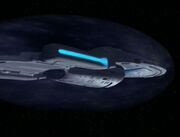
Voyager 's attempt to break orbit fails
By the time The Doctor is successfully located and beamed back on board, three years have passed on the planet. Overjoyed to see them, he explains that Voyager has been a catalyst for invention and that a space race is in progress to make contact. Voyager is also used as a catalyst for religion, music, art, and even children's toys. He tells the captain that his roommate , with whom he shared an apartment, even composed an aria about Voyager . He said the apartment was destroyed by a rival state's cannon shells when they started a war with the one he was in. The Doctor goes on to explain that the war was finished in "a matter of weeks" when a new treaty was signed.
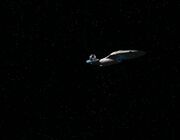
The planet's space race reaches its climax
He also informs Janeway that he has committed to memory the last three hundred years of meteorological records and some seismic analysis from the planet. Using The Doctor's data, the crew attempts an escape, but after only fifty meters of ascent, seismic activity increases and the exercise is aborted. In the meantime, a space capsule from the planet's surface reaches Voyager and its two-person crew find the crew in what appears to be some form of stasis ; the time differential causes them to observe only microseconds passing on board the ship while they experience several minutes. When they reach the bridge , they witness Neelix in the middle of pouring Janeway some coffee and realize it is not stasis they are witnessing, but a time differential. Right after, they enter Voyager 's time-frame and collapse, to the surprise of the bridge crew . Janeway immediately calls for medical emergency.
Act Four [ ]
In sickbay , The Doctor was able to save the pilot, Gotana-Retz , while the commander, Terrina , does not survive the transition. The Doctor notes that, given his extensive knowledge of local physiology, he is as good as Retz' family doctor. Retz is revived in sickbay in the company of Janeway and The Doctor. After hearing the news of his fallen comrade, he informs Janeway that he is beginning to understand the time differential between his world and Voyager. Janeway explains the difference in time to Retz in greater detail, to which he asks, " So you really haven't been watching us for centuries? " Captain Janeway replies " Actually, we just got here. And we're hoping you can help us find a way to leave. "
Later, Gotana-Retz meets with Janeway in her ready room . Retz realizes that everyone he knew when he left his planet is long dead. He tells the Captain that although he is an accomplished pilot, he lacks the courage of his associates and they made a mistake choosing him. Janeway disagrees, telling Retz that for someone whose life has been turned upside down, he is handling it well. Retz reminisces and tells Janeway that when he was a child lying in his crib, his first memory was not of his mother 's face, but of the sky ship toy hanging above, and now he is the only one of his kind to know its true name: Voyager . It is obvious that he, much like the rest of his species, has always fantasized about what the sky ship is really like. Retz then wonders if Voyager will be the last thing he will ever see. The captain informs him that she has no intention of keeping him aboard against his will, but warns that the longer he stays, the harder it could become for him to return home.
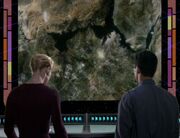
A troubling development on the planet: antimatter tests
Retz takes a moment to think about this and begins to sing in nostalgic reflection, " Star of the night, star of the day, come to take my tears away. Make my life always bright. " As he trails off, he tells Janeway that it's a child's prayer to Voyager . The captain hopes that Retz is not too disappointed in discovering that Voyager is merely a starship. Retz replies, " How often does your very first dream come true? " And although every minute spent aboard means that months and even years pass on the surface, he agrees to help the crew interpret The Doctor's data and find a way to break orbit.
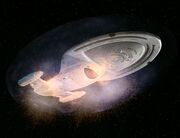
Voyager under attack
As Seven scans the surface she detects warp experimentation. Soon after, Voyager is being attacked by antimatter torpedoes and a tricobalt device .
Act Five [ ]
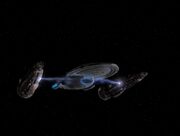
Voyager is towed out of orbit
The weapons are soon causing major damage to Voyager 's shields , so Janeway convinces Retz to go back to the planet to convince his people the ship is not a threat. He agrees, and returns to his planet with Voyager 's specifications, with Janeway hoping he can convince his planet's rulers to stop the attacks and help them leave orbit. Before the pilot leaves, The Doctor tells him that, when he was living on the planet, he had a son who was probably long dead by this point. He asks the pilot to contact the members of his son's family to tell them about him. The pilot asks how The Doctor could have a son, as he is a hologram, The Doctor just answers " it's a long story. "
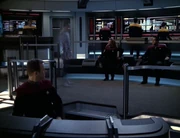
Gotana-Retz returns to Voyager
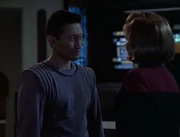
" I feel like I'm saying goodbye to an old friend. "
After more attacks and a planet's year since the pilot returned, two ships appear next to Voyager and deploy a tractor beam to pull it clear. Using a temporal compensator invented on his planet, Gotana-Retz returns one last time to say goodbye before the sky ship leaves forever.

The Sky Ship flies away
Finally, Gotana-Retz, now an old man, sits on a hillside and gazes wistfully into the sky as the star that is Voyager winks out and vanishes. The hillside now overlooks a vast technological metropolis.
Memorable quotes [ ]
" How does this sound? 'The Weird Planet Where Time Moved Very Fast and So Did the People Who Lived There,' by Naomi Wildman… " " Your title is verbose. I suggest you try to condense it. " " The Weird Planet " " Better, but it lacks precision. 'The Weird Planet Displaced in Time' " " Perfect! "
" That's one planet that never showed up on the multiple choice exam. "
" If there's an intelligent species down there, we'll be able to track their development, not just for days or weeks, but for centuries. "
" We might miss the rise and fall of a civilization. " " So, we'll watch the next one. "
" What should I say? " " Oh…glad to meet you. Where are you from? Please stop shaking our planet. "
" What if they're big purple blobs of protoplasm? " " Then you'll be the best-looking blob on the planet. "
" Captain, isn't it time we returned fire? " " We've done enough damage to these people over the last thousand years. "
" You're the best pilot we have, that's why you're on this mission. This is no different than flying your favorite… " " Oh, it's different! " " I can't argue with that. "
" Jason? An unusual name. " " Yes. He was my… son. " " But you're a hologram. " " lt's a long story. "
" If you've ever wanted to report more than the weather, now is your chance. Tell them to clear Central Lake of all traffic: Orbital 1 is coming in for a landing. "
Background information [ ]
- Obi Ndefo previously played Drex , Martok 's son, in the Star Trek: Deep Space Nine season four premiere " The Way of the Warrior ".
- In the observatory on Kelemane's planet , the hole in which the large telescope is encased in is a reuse of the framework of the Cardassian circular airlock hatch from Star Trek: Deep Space Nine . One of the hatches later reappears in VOY : " Tsunkatse ", on Penk's starship , and later in the seventh season episode " Friendship One ", in the Otrin's species cave settlement.
- The book Star Trek 101 (p. 177), by Terry J. Erdmann and Paula M. Block , lists this episode as one of the "Ten Essential Episodes" from Star Trek: Voyager .
- This episode is notably similar to the novel Dragon's Egg , by Robert L. Forward. The novel also involves a Human space ship observing the extremely rapid evolution of a society on a star about which the ship orbits.
- This is the last episode of Star Trek directed by Gabrielle Beaumont.
Continuity and trivia [ ]
- One day on the planet is slightly more than one second long (1.03 seconds) in normal time, so three years on the planet would only be 18.9 minutes in normal time. This would mean that a hundred years on the planet would pass every 10.45 hours. Since Voyager seems to have been in orbit for centuries of planetary time it is likely that the episode takes place over a few days of time for the crew.
- This episode contains a scene in which a member of an alien species writes in English using a pen and ink. This is unusual considering most alien writing depicted in Star Trek is made up of alien-looking characters.
- Although Tuvok describes the planet as having a high rate of rotation "like a quasar ", this property more accurately describes a pulsar .
- Star Trek: The Original Series had an episode entitled " Wink of an Eye " where Scalosians , moving too fast to be seen or heard (other than a faint buzzing sound), board the USS Enterprise and abduct Captain James T. Kirk . However their accelerated life wasn't natural, it was caused by radiation sickness which led to the change of their biochemistry. Accelerated life was natural for Kelemane's species, caused by the nature of their homeworld.
Video and DVD releases [ ]
- UK VHS release (two-episode tapes, Paramount Home Entertainment ): Volume 6.6, 14 August 2000
- As part of the VOY Season 6 DVD collection
Links and references [ ]
Starring [ ].
- Kate Mulgrew as Captain Kathryn Janeway
Also starring [ ]
- Robert Beltran as Chakotay
- Roxann Dawson as B'Elanna Torres
- Robert Duncan McNeill as Tom Paris
- Ethan Phillips as Neelix
- Robert Picardo as The Doctor
- Tim Russ as Tuvok
- Jeri Ryan as Seven of Nine
- Garrett Wang as Harry Kim
Guest star [ ]
- Daniel Dae Kim as Gotana-Retz
Co-stars [ ]
- Obi Ndefo as Protector
- Daniel Zacapa as an Astronomer
- Olaf Pooley as a Cleric
- Jon Cellini as a Technician
- Kat Sawyer-Young as Astronaut
- Melik Malkasian as a Shaman
- Walter Hamilton McCready as a Tribal Alien
- Scarlett Pomers as Naomi Wildman
Uncredited co-stars [ ]
- David Keith Anderson as Ashmore
- Michael Bailous as Voyager operations officer
- Richard Bishop as Voyager operations officer
- Christine Delgado as Susan Nicoletti
- Tarik Ergin as Ayala
- Tina Kotrich as Voyager operations officer
- Noriko Suzuki as Voyager operations officer
- Kelemane's balloonists
- Kelemane's weather coordinator (voice)
- Voyager operations officer
Stand-ins [ ]
- Brita Nowak – stand-in for Jeri Ryan
References [ ]
acceleration ; almanac ; altar ; ammonium ; amplitude modulation ; anthropology ; antimatter torpedo ; aria ; astronomy ; Astronomer's grandfather ; athlete ; Belief system ; cannon ; carbon monoxide ; career ; carrier wave ; Central Lake ; Central Protectorate ; class V planetary probe ; coastline ; concert hall ; confinement beam ; crib ; Darek ; decayed orbit ; disorientation ; docking port ; doppler component ; display buffer ; dwarf star ; elemental constant ; epidermal ; exile ; family doctor ; fire-fruit ; frequency ; god ; Gotana-Retz' mother ; gravimetric gradient ; " Ground Shaker "; hemisphere ; high orbit ; holomatrix ; hot air balloon ; internal combustion ; iron ; Jefferies tube ; Kelemane ; Kelemane's planet ; Kelemane's species ; Kelemane's species' sport ; kilometer ; Klingon ; lake ; Lakeside ; Launch Control/Tactical Command Center ; logic ; low orbit ; lyric ; Mareeza ; mathematical constant ; medical journal ; meter ; Milky Way Galaxy ; Mountain ; multiple-choice exam ; mythology ; numerical sequence ; observatory ; opera house ; orbit ; Orbital 1 ; palace ; pat on the back ; playoff ; pre-warp society ; Prime Directive ; prime number ; Protector ; protoplasm ; purple ; space capsule ; quasar ; radio transmission ; Red River ; religion ; rendezvous range ; roommate ; season ; season (sports); scanning range ; shell ; shooting star ; " Sky Ship "; Sky Ship Friends ; state ; Station 004 ; surface ; synchronous orbit ; Tabreez, Jason ; tachyon ; Tactical Air Command ; Tahal ; technology ; telescope ; temporal compensator ; temporal field ; time frame ; Torelius ; tricobalt device ; ultra-high frequency ; warp-capable civilization ; weather ; weather coordinator ; Weird Planet Displaced in Time, The
External links [ ]
- "Blink of an Eye" at StarTrek.com
- " Blink of an Eye " at Memory Beta , the wiki for licensed Star Trek works
- " Blink of an Eye " at Wikipedia
- 1 Star Trek: Discovery
Star Trek: Voyager
Blink of an Eye
Cast & crew.
Melik Malkasian
Walter H. McCready
Tribal Alien
Olaf Pooley
Daniel Zacapa
Information
© 2011 CBS Corp.
Accessibility
Copyright © 2024 Apple Inc. All rights reserved.
Internet Service Terms Apple TV & Privacy Cookie Policy Support
- The Original Series
- The Next Generation
- Deep Space Nine
- Strange New Worlds
Far From Home
That hope is you, part 2.

Blink of an Eye
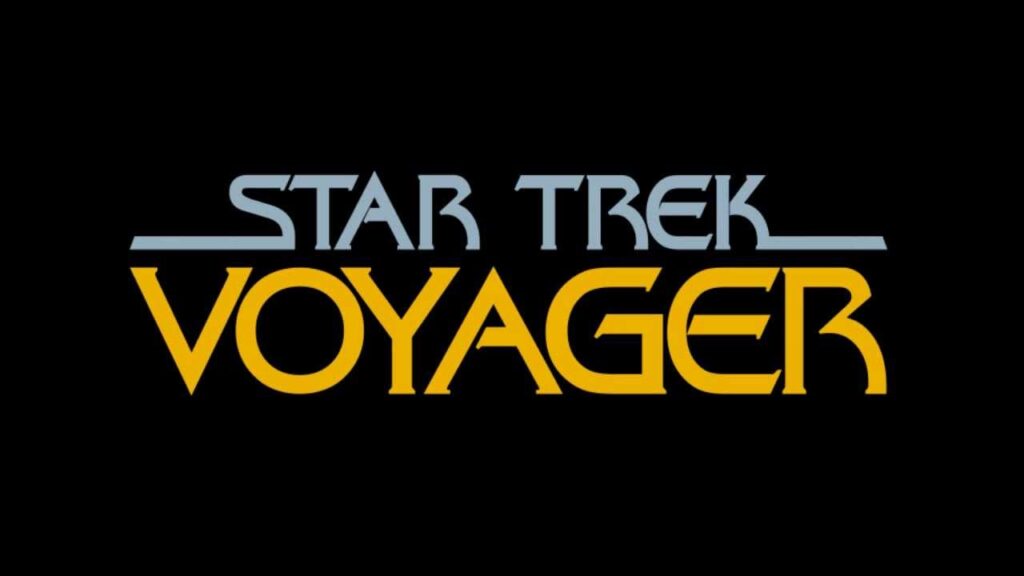
The U.S.S Voyager, captained by beloved Starfleet veteran Kathryn Janeway, is on a mission to return to Earth after an unprecedented seventy-year journey through the Delta Quadrant. As they cruise through an alien system of planets, they come across a strange anomaly: a planet is spinning wildly at a millions times faster than its orbit and its inhabitants are living on the same day, over and over again, all in the blink of an eye.
When the crew of the Voyager investigate, they discover that this strange phenomenon is the result of a gravitational rift caused by a nearby black hole. They also discover that the planet’s inhabitants, the Sikarians, have developed a technology that allows them to manipulate time, and they’ve been using this technology to keep their planet in its current state.
The Voyager crew soon realize that the planet is in danger of being destroyed by the gravitational rift and they must help the Sikarians in order to save them. They devise a plan to reverse the effects of the rift using a modified version of the Sikarian’s time manipulation technology and a newly created ‘graviton field’.
In order to make sure the plan is a success, they enlist the help of the Sikarian’s leader, an elderly man named Kamin, who is the only one with enough knowledge of the technology to make it work. With his help, the Voyager crew is able to slow the planet’s spin and save its inhabitants from destruction.
However, their heroic efforts come with a price: Kamin must remain on the planet so that the technology can continue to function, trapping him in an endless loop of the same day, forever.
The crew of the Voyager is left feeling a mixture of sadness and joy for all the lives that were saved, but also guilt for the one that was taken. This story serves to remind us all that no matter how powerful our technology is, there are still some things in life that can never be undone.
Related Posts
Equinox (part 2), persistence of vision.
Type above and press Enter to search. Press Esc to cancel.

- Web Channels
- Star Trek: Voyager
Blink of an Eye

Voyager becomes trapped in orbit of a primitive planet where time passes rapidly (days are seconds aboard the ship) and enters the mythos of its indigenous people. Inadvertently influencing the civilization, Voyager eventually becomes the target of newfound weaponry.

Daniel Dae Kim
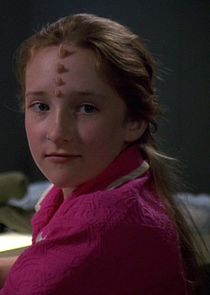
Scarlett Pomers
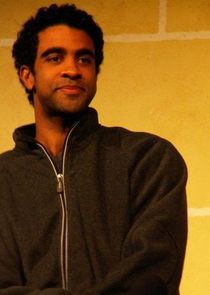
Daniel Zacapa

Jon Cellini
Melik malkasian.
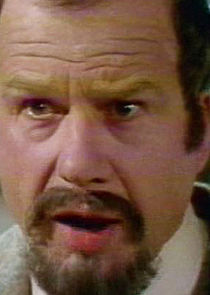
Olaf Pooley
Walter h. mccready, cast appearances.
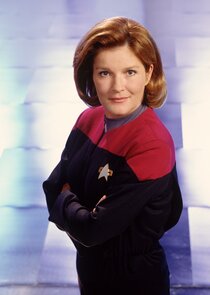
Kate Mulgrew
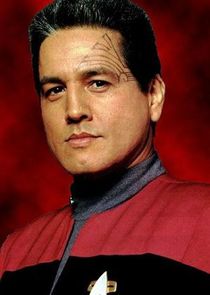
Robert Beltran
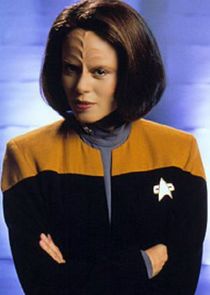
Roxann Dawson
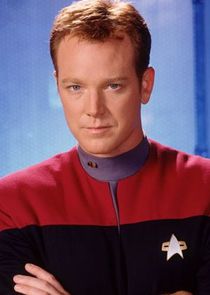
Robert Duncan McNeill

Ethan Phillips
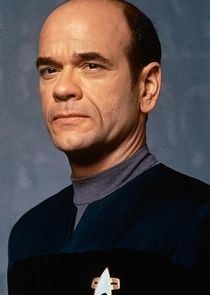
Robert Picardo
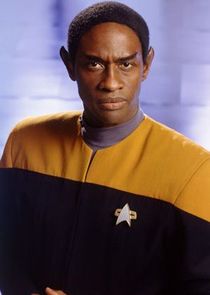

Garrett Wang
Episode discussion.
No comments yet. Be the first!
An archive of Star Trek News
Blink Of An Eye
If nothing else, the finer details of the Star Trek: Voyager episode "Blink of an Eye" test not only your ability to grasp abstract scientific concepts, but also your patience in exploring and comprehending them. They even make you wish you had paid attention in all those boring high school physics and earth science classes! The key to this mindbender is the peculiar space/time differential, which hangs like an opaque curtain between the planet and the surrounding space. Because of it, the planet appears to be flattened at the poles and rotating very quickly - about 60 times per minute, or once per second. If these conditions were true on the surface, then night and day would pass at one-second intervals, like turning a light bulb on and off; also, Voyager wouldn't have appeared fixed in the sky, but rather would have blipped into view every second like a cursor on a computer screen. The most interesting conundrum is figuring out how and when the differential completely stops affecting the Orbital One space capsule, which is on its way to study Voyager. Launch Control's last message about igniting the final-stage propellants is accelerated by the time it reaches Orbital One, in the same way that the original AM radio message was accelerated when Voyager first received it. Orbital One is not, however, completely free from the differential's effect at this point, or else the message from Launch Control would not have been garbled. The capsule is in a lulling kind of "twilight zone" - too slow to interpret a message from the surface but too fast to interact with the Voyager crew, who are immobile. This "Voyager purgatory" can be likened to a slingshot/Doppler effect: The capsule was shot upward at hyperaccelerated speeds so fast that it reached Voyager before time caught up with it. The immobile Voyager crew and the hyperaccelerated alien species are plot points that hearken back to the similarly named TOS episode "Wink of an Eye." One wonders if the Doctor's hypospray, which was supposed to accelerate the pilot's metabolic functions for his return journey to the planet, contained any Scalosian water. "Blink of an Eye" also evokes a theme that mirrors the effect of many Star Trek actors on their adoring fans. Voyager's arrival at the planet encouraged invention, religion, science, art and even children's toys, just as characters like Doctor McCoy or Scotty once encouraged fans to seek medical or engineering degrees, or just more education in general. Also, Janeway's fear that an Away Team could upset Voyager's place in the planet's mythos mirrors Picard's concern in TNG's "Who Watches the Watchers," when he felt that bestowing commandments on the Mintakans could send them back "into the dark ages of superstition and ignorance and fear." Finally, at last, "Blink of an Eye" featured B'Elanna Torres in a more active role. Guest star Daniel Dae Kim (the pilot) played "Lt. John Matheson" on the late Babylon 5 spin-off series, Crusade. Chakotay's anthropological and scientific interest, piqued again here, was documented in episodes like "Initiations" and "One Small Step."
You may have missed

Several S&S Trek Books On Sale For $1 This Month

- Star Trek: Lower Decks
Another Classic Trek Actor On Lower Decks This Week

Classic Trek Games Now On GOG

- Star Trek: Prodigy
Star Trek: Prodigy Opening Credits Released
- Buy the Book…
- Reviews Hub

the m0vie blog

Following Us
- Adding Our RSS Feed to Your Gmail
- Following our Feed in Internet Explorer
- Millennium (Reviews)
- Star Trek: Deep Space Nine (Reviews)
- Star Trek: Enterprise (Reviews)
- Star Trek: The Next Generation (Reviews)
- Star Trek: The Original Series (Reviews)
- Star Trek: Voyager (Reviews)
- The X-Files (Reviews)
- X-Files Fandom Poll Form
Check out the Archives

Awards & Nominations

Star Trek: Voyager – Blink of an Eye (Review)
Blink of an Eye is perhaps the last truly great episode of Star Trek: Voyager .
There are good episodes that follow Blink of an Eye . There are solid comedy episodes like Renaissance Man . There are effective homage episodes like Author, Author . There are even well-constructed archetypal narratives that fit within the thematic framework of both the series and the franchise like Memorial . However, there isn’t a single episode as elegant as Blink of an Eye , a story which demonstrates the raw potential of Voyager as a narrative engine for telling these big and broad science-fiction narratives.
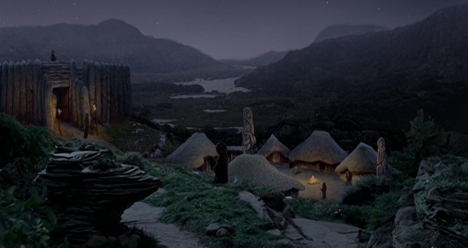
From the mountains of faith…
Indeed, it might even be possible to argue that Blink of an Eye is the last truly great episode of Berman era Star Trek .
There is a tendency to overlook Star Trek: Enterprise in discussions of the franchise’s history and legacy, no matter how quietly influential the prequel series has become in terms of Star Trek Beyond or Star Trek: Discovery . This does a disservice to the last series of the Berman era, particularly the final two seasons that grappled with the question of what it means to be Star Trek in the aftermath of 9/11. Nevertheless, the trauma of 9/11 exerted such a gravity that even the best episodes of Enterprise seemed to exist in its shadow; Judgment , Cogenitor , The Forgotten , Babel One , United .

… through the valley of fear…
Even outside of hyperbole, Blink of an Eye is a beautifully constructed piece of television that speaks to the appeal and the potential of Star Trek . It is a lyrical allegory, a very simple and straightforward idea that is constructed in such a way as to invite the audience to ask profound and meaningful questions about the nature of human existence. What is it like to watch a civilisation rise up? What ideals drive it? Towards what values and ideals might it strive? More than that, what is it like to sit outside of time and watch those beholden to time? These are fascinating and enlightening ideas.
Blink of an Eye was developed from a story by Voyager writer Michael Taylor, one of the most ambitious writers to ever work on the series. Taylor had contributed the stories that would develop into The Visitor and In the Pale Moonlight , demonstrating a willingness to think outside the box. On Voyager , Taylor’s ambitions were frequently tempered and his scripts often compromised. Both Once Upon a Time and The Fight were much more generic and mediocre pieces of television than the original premise. Blink of an Eye is a rare Taylor concept that doesn’t feel watered down.
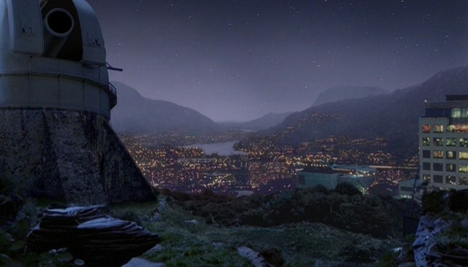
…. But the river is wide And it’s too hard to cross…
It helps that the teleplay for Blink of an Eye was written by Star Trek veteran Joe Menosky. Menosky had a long association with the franchise and a deep understanding of how it worked, having cut his teeth on Star Trek: The Next Generation and Star Trek: Deep Space Nine . More than any other writer, Menosky understood the idea of Star Trek as a mythic framework, an avenue for exploring stories and what they mean. This theme plays through Menosky’s work on the franchise; Darmok , Masks , Dramatis Personae , Muse .
Blink of an Eye feels like an episode perfectly callibrated to the strengths of Taylor and Menosky, a high-concept episode that is fundamentally about the Star Trek mythos.
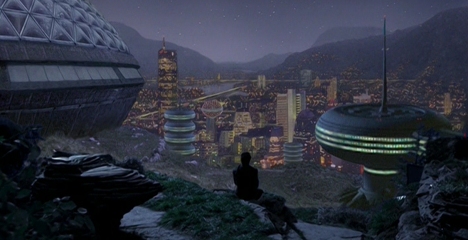
We all end in the ocean We all start in the streams We’re all carried along By the river of dreams.
Discussing the episode with Cinefantastique , producer Brannon Braga conceded that Blink of an Eye posed all manner of logistical challenges to the production team:
That was a very difficult script. It was a really, really tough concept to sell. But we were very pleased with it. It was a very ambitious episode. We did our best to depict the evolution of a civilization over the course of thousands of years. I thought it was fun to go from seeing primitive people to seeing space travel. It had a very large cast and lots of sets, special effects, a very high-concept show.
Indeed, some of these challenges are quite visible on screen, with Blink of an Eye straining against the limitations of television budgets and the constraints of the medium as it existed at the time.
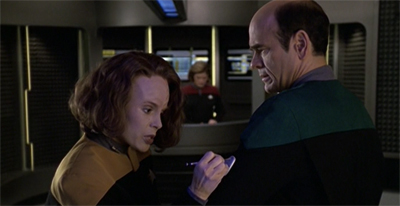
Working out the kinks.
Blink of an Eye confines the entire history of an alien civilisation to a series of short vignettes, mostly shot on the same sets and using less than a dozen actors. There is something strangely intimate about the grand epic sweep of history portrayed in Blink of an Eye ; the mountainside where the religion worshipping the “ground-shaker” is also the site of an attempt at first contact and also home to an observatory with its lens trained upon the “sky-ship.” In each case, a small number of characters interact with one another as a microcosm of an entire civilisation.
Of course, these dramatic contrivances can all be explained or justified. After all, Blink of an Eye makes it clear that there is never one singular religion on the planet; even within the isolated geographical area within which the story unfolds, the technician and the astronomer have radically different ideas of what the “sky-ship” represents. Blink of an Eye has just chosen to look at the conversations and revelations taking place on this hill. It seems likely that similar conversations have taken place, with slight variations, across the entire planet throughout history.
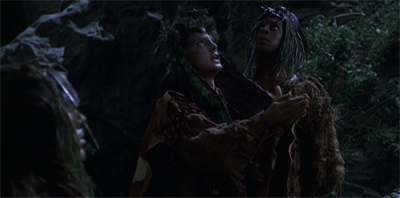
Altaring this planet’s history.
It seems likely that those primitive tribes in the first vignette were not the only people to witness the arrival of the new star, and not the only to build the harbinger into their mythology. Similarly, it seems unlikely that Kelemane was the only (or even the first) inhabitant of the planet to speculate that direct communication was possible with whatever that star represents. Even the scene in the observatory makes it clear that the inhabitants of the planet have been trying to contact Voyager for quite some time, it just so happens that this is the message that the ship happens to hear.
Even without these appeals to logic and rationality, there is an appealing purity to how Blink of an Eye depicts its science-fiction high concept. The decision to set the bulk of Blink of an Eye within a relatively confined area allows the show to anchor the audience in a very fixed view of the planet, giving them a very defined perspective from which they might watch the planet evolve. The episode offers a convincing portrayal of the passage of time through canny use of digital artwork.
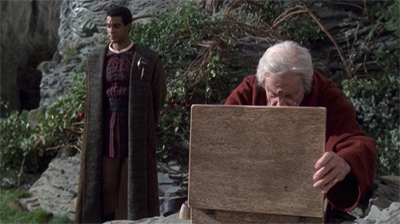
He’s on the case.
Blink of an Eye uses the same location in its establishing shots of the planet surface, while acknowledging that those shots are set centuries apart. Blink of an Eye fixes its perspective in space, but not in time. As a result, the audience gets to watch a snapshot slideshow of the evolution and development of this culture, the growth of the community from a few scattered huts to a castle to an observatory to a science-fiction future. It is very confident and very assured televisual storytelling, remarkable given that Voyager was usually quite conservative in such matters. It recalls the montages in Counterpoint .
Even beyond the clever concept of showing the same view across four different time periods, these vignettes from the planet surface have an appealingly archetypal quality. The characters are all very broad, with Kelemane, Gotana-Retz and Trina receiving names. The characters talk in very generic terms about their world, so as not to confuse audience members with overly-specific back story. The scenes set on the planet surface are consciously heightened, having that abstract theatrical quality that defines so much of Star Trek .
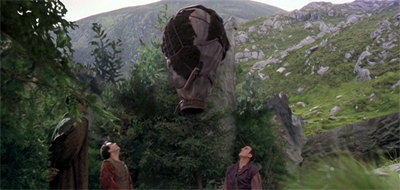
Time literally flies.
There is an artifice to Blink of an Eye , but that is a key strength of the episode. Star Trek has very rarely managed to present a naturalistic or entirely convincing version of the future, arguably rooted as much in the theatrical tradition as in cinematic storytelling. It is no coincidence that so many beloved Star Trek actors established themselves on the stage rather than the screen. Blink of an Eye condenses the entire history of a civilisation down to something approaching a stage play; small groups of actors on standing sets talking about grand philosophical constructs.
After all, Blink of an Eye is about more than just this history of this fictional world. It is not particularly interested in the finer details of the political relationships between various states or the mechanics of local sports teams, except that occasional references add a little flavour and texture to this civilisation. Instead, Blink of an Eye is a story about history and time, about what it is to sit outside of time and watch as history unfolds. Although these ideas are explored repeatedly across the Star Trek franchise, they are of particular interest to Voyager .
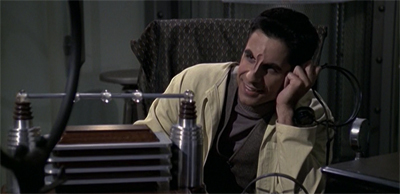
Voyager is a television series very invested in the idea of history and time, as reflected in the disproportionately high quantity of time-travel-related episodes across the length and breadth of the series; Time and Again , Future’s End, Part I , Future’s End, Part II , Year of Hell, Part I , Year of Hell, Part II , Timeless , Relativity , Fury , Shattered , Endgame . These are only the most literal of time travel stories, glossing over stories where the audience moves forward or backwards in time even as the crew remain fixed in place, as in Living Witness or 11:59 .
The basic premise of Blink of an Eye is so deceptively simple that it is surprising it took the Star Trek franchise so long to attempt it. Voyager finds itself pulled into orbit around a strange planet with “a high rate of rotation, approximately fifty eight revolutions per minute.” In layman’s terms, that means that time moves considerably quicker on the surface of the planet. “For each second that passes on Voyager, nearly a day goes by on the planet,” Seven of Nine explains, although the episode wisely avoids getting too specific about the mechanics at play.
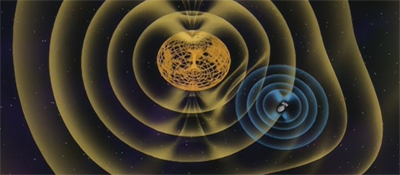
Polls apart.
Time dilation has long been a fascination for science-fiction storytelling, dating back to H.G. Wells’ short story The New Accelerator at the latest. In some ways, science-fiction’s love affair with time dilation could be seen as an attempt to narrativise the core aspects of Einstein’s theory of relativity. As Jimena Canales notes, one of the major criticisms of Einstein’s reconceptualisation of space-time in the twentieth century was that it was too literary in concept :
Many readers swallowed relativity stories as quickly as they could be printed, but the French philosopher Henri Bergson, who had attended Langevin’s relativity lecture years earlier, was profoundly irritated by scientists’ growing prominence as public intellectuals. The philosopher had been, until then, more famous than Einstein, known for having launched his own “Copernican revolution” (as William James put it), which introduced a notion of time that could not be reduced to clocks. Einstein and Bergson quibbled with each other’s views for the rest of their lives. The physicist’s talent, the philosopher implied, was not so different from that of H. G. Wells, whose novel “The Time Machine” had considered time as a fourth dimension, just as general relativity did; perhaps both fascinated the public because of their fictional qualities more than their scientific ones. Relativity enthusiasts, he argued, should be careful to “distinguish the real from the symbolic,” to avoid elevating “a mathematical representation into transcendental reality.” They should go back to the original equations and seek to connect them to the “really real”—in other words, that which could actually be perceived. Nowhere could the philosopher find cigar-smoking aviators or transplanetary love stories.
Indeed, science-fiction stories that exploit relativity often approach it in a metaphorical rather than literal manner, understanding the universal and symbolic power of the idea of time passing at different rates for different individuals. Christopher Nolan’s Interstellar is a story about time dilation caused by gravity disturbances, but it is also an allegory for the more relatable experience of an individual watching their children grow up without them.
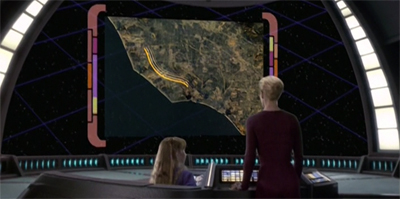
Interestingly, Star Trek has been somewhat cautious about playing with these sorts of big ideas, at least on television. Perhaps this is because the franchise is aimed at a wide audience, and the production teams are wary about alienating viewers without a basic grasp of physics. Maybe this is an acknowledgement of the fact that the faster-than-light travel and transporter technology in Star Trek are of a much softer kind of science-fiction, and applying too much rigourous hard science-fiction might bring the whole house of cards tumbling down.
Writer David Gerrold’s original pitch for the original series, which he later developed into the novel The Galactic Whirlpool , was built around the concept of relativity. He conceived of a generation ship caught in orbit of a singularity that sped up the passage of time. This idea was rejected for a variety of reasons, and Gerrold would make his debut writing for the franchise with a rewrite of the script for the android comedy I, Mudd and the all-time classic The Trouble with Tribbles .
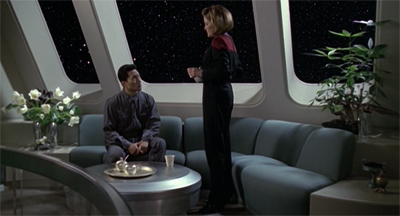
Astrophysics just aren’t most viewers’ cup of tea.
It would take televised Star Trek a few years to catch up. Although the franchise played with causality and time loops in episodes like We’ll Always Have Paris and Cause and Effect , the first real episode of The Next Generation to broach the idea of relativity was Timescape , in which the Enterprise is frozen in time by phenomena related to the singularity used to power a Romulan Warbird. Years later, Gravity exploited relativity in order to strand Tuvok and Paris on the surface of an alien planet for an extended period of time, while Voyager’s rescue mission plays out over the course of a few hours outside a singularity.
The basic concept of Blink of an Eye owes a massive debt to Robert L. Forward’s Dragon’s Egg , the 1980 hard science-fiction classic that the author described as “a textbook on neutron star physics disguised as a novel.” In that story, life is seeded on planet orbitting a neutron star, with humanity watching as civilisation develops and evolves at an incredibly accelerated rate. There are obvious parallels with the basic plot of Blink of an Eye , although Voyager understandably streamlines the concept for a prime-time television audience.
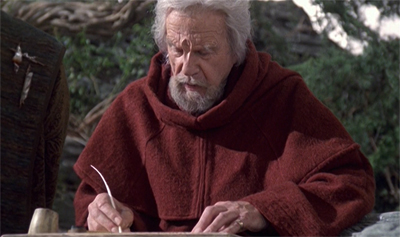
And it was written…
In many ways, Blink of an Eye is a classic and archetypal Star Trek story, a clever science-fiction high-concept that provides an allegory for some aspect of the human condition; on the dangers of “othering” what is different in The Devil in the Dark , on the experience of a life lived in The Inner Light , the challenges of adjusting to life after incarceration in Hard Time . It is easy to imagine a version of Blink of an Eye within the confines of The Next Generation or even Deep Space Nine .
(Although Deep Space Nine did high-concept science-fiction less often than the other Star Trek series, it tended to compensate by filtering through a more personal perspective. Deep Space Nine often seemed to ask what these wacky high-concepts meant to individual characters, with the “O’Brien must suffer” episodes like Whispers , Visionary or Time’s Orphan feeling like meditations on what it would be like to be a person living through the crazy stuff that happens in the Star Trek universe; android doppelgangers, time travel, time distortion. Were Blink of an Eye a Deep Space Nine episode, it would focus on the EMH.)
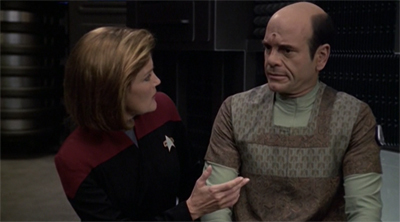
“Now I know how O’Brien feels.”
However, buried within Blink of an Eye is a story that is very specific to Voyager , tapping into ideas that are core themes of the long-running series. In particularly, it is telling how Blink of an Eye chooses to place Voyager outside of the accelerated space-time on the planet surface, presenting the ship and crew as a universal constant. Whether as the “ground-shaker” or the “sky-ship” , Voyager is a permanent fixture. It is a constant, even as the world beneath it changes and evolves.
Blink of an Eye makes a point to stress just how much change takes place for the inhabitants of the planet over the course of the episode. The changing backgrounds provide a clear sense of social progress, as do little changes in language about how they talk about Voyager. The ship is initially an angry god shaking the heavens, but their understanding of it grows over the course of the episode. First it is another city, then it is recognised as a space craft. Along the way, costuming and technology evolves.
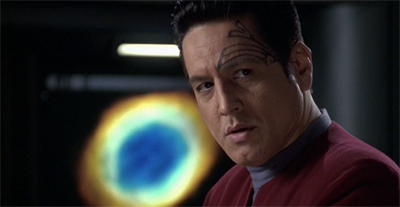
Seconds in command.
In contrast, Blink of an Eye suggests that Voyager exists outside of time, while these characters below live and die. “It’ll take a few hours to make the adjustments,” Torres remarks of plans to snap pictures from the planet surface. “A few hours?” Chakotay sighs. “We might miss the rise and fall of a civilisation.” Torres responds, “So we’ll watch the next one.” There is a sense that life is transient, that the world beneath Voyager spins and whirls, while Voyager remains above and outside of time.
This idea is reinforced by the small arc focusing on the EMH, who is absent from Voyager for only a few minutes, but lives an entire life on the planet surface. Making passing reference to “Mareeza” , the EMH elaborates, “She was my roommate. Three years is a long time, Captain. One needs companionship.” In a later conversation with Gotana-Retz, the EMH reveals that he started a family on the planet surface, and that his descendants might live on. The EMH does not reveal any of this to his crew mates. They would not understand. They exist outside of the flow of time.
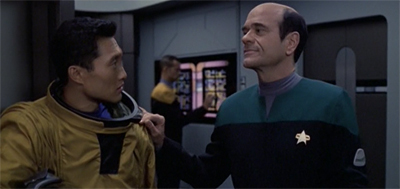
“In hindsight, I do feel like a bit of a hypocrite for giving Janeway such a hard time last week.”
As Duncan Barrett and Michèle Barrett note in Star Trek: The Human Frontier , the episode is very engaged with idea of time as it relates to history:
In this, Star Trek is not far removed from the efforts of some historians. Bill Schwarz, discussing the ‘relativisation of the conception of historical time’, quotes the historian Fernand Braudel’s summation of his life’s work: ‘My great problem, the only problem I had to resolve, was to show that time moves at different speeds.’ This is not the same register of analysis as the observation of a distinction between subjective and objective time – that time goes slowly when you are bored and rapidly when you are enjoying yourself. It points towards the sense of variability in the passing of historical time, as well as the implications, for the experience of time, of post-Einstein astrophysics.
It is a fascinating concept .
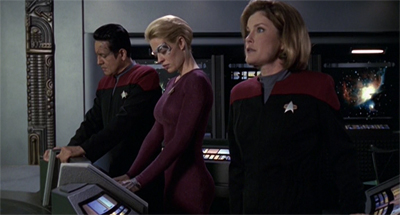
A guiding light…
This is very much in keeping with how Voyager approaches the idea of time, and it is appropriate that Blink of an Eye was only the second episode of Star Trek to broadcast in the year 2000. The turn of the millennium technically marked the end of the nineties, but the decade lingered on. The world did not end at the stroke of midnight, at the turn of the millennium. Life continued as normal, as Voyager had confidently (and correctly) predicted in 11:59 . There was no massive social upheaval, no change in cultural consciousness.
The nineties seemed to exist in perpetuity, lacking the same closure that the collapse of the Berlin Wall brought to the end of the eighties. Time seemed frozen. People would be forgiven for wondering whether Francis Fukuyama had been correct in declaring “the end of history” or whether Charles Krauthammer’s “unipolar moment” would last indefinitely. Politically, the decade continued through at least September 2001, although nobody could have known that at the start of the twenty-first century.
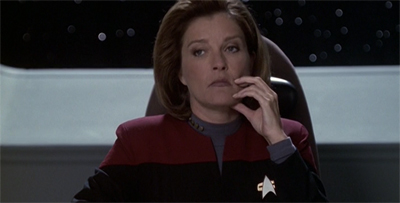
Warping in place.
This sense of stasis extended beyond the political sphere. Art critic Jason Farago has argued that the nineties never ended in an artistic or creative sense :
Some of the art of the 1990s looks decidedly dated. Net art went the way of “You’ve got mail.” Slick, digitally altered large-format photography has gone out of fashion, too; Sam Taylor-Wood (now Taylor-Johnson) gave up art completely and is now directing the softcore Hollywood flick Fifty Shades of Grey. But what’s surprising – and a little disturbing – is how much art from the 1990s could have been made last week. It’s not just that the themes of the ‘90s, from the meaning of identity to the impact of economic transformations, are our themes too. It’s also the style and the feel of the ‘90s that endures, so much so that these historical exhibitions of ‘90s art can feel almost comically fresh. What if the 1990s, far from being ancient history, are actually still going on? The social practices of gallery spaces that arose in that decade remain the lingua franca of contemporary art everywhere, and video installations that were innovative in the ‘90s now form part of every contemporary exhibition. Since then… what’s new? There has been a noted turn to performance in the 21st Century, and a market-happy revival of abstract painting, but other than those small trends the ‘90s settlement endures. People will still queue for a free curry in an art museum; the only difference is that they snap it with their cameraphones before eating.
The nineties exist outside of time, a concept that plays repeatedly throughout the run of Voyager .
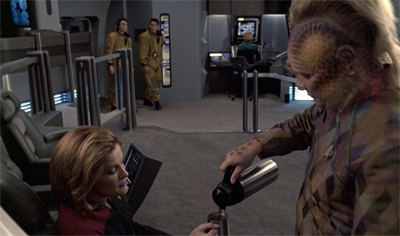
Stuck in a moment.
After all, Voyager did represent the end of history for the Star Trek franchise, in a very literal sense. It is the last Star Trek series, from a chronological perspective. Enterprise and Discovery both retreat into the franchise’s history. Even within the context of the series itself, Voyager has difficulty imagining a future where anything is radically different. It is no surprise that Voyager was the first Star Trek series to imagine a very distant future beyond its own setting, and the only series to insist on the rock-solid stability of that future.
Voyager seemed to imagine what might be termed a “Pax Federation” , a future in which the Federation were not only a dominant political force in space, but also charged with protecting time itself. Whereas Deep Space Nine suggested that the Federation’s present was under threat and Enterprise repeatedly warned viewers that even the future they had been shown was no longer assured, Voyager could not conceive of a future where anything had changed beyond the uniforms and the techno-babble; Future’s End, Part I , Future’s End, Part II , Timeless , Relativity , Endgame .

Stony resolve.
It should be noted that this attitude is not unique to Voyager , but instead reflects a larger cultural movement. As Lutz Niethammer observed in Posthistoire: Has History Come to an End? , there was an emerging school of “posthistorical” thought:
Two aspects distinguish the posthistorical cluster of arguments from writings which may, in some respects, be quite similar: first, their reference back to, and self-location within, a tradition of the production of meaning for which they no longer see any social future; and second, their avoidance of thinking about death, especially about the danger that modern civilisation will annihilate itself and the world, which is the central preoccupation of other writers. Instead, the picture that looms for theorists of posthistory is of a mortal life lived without any seriousness or struggle, in the regulated boredom of a perpetual reproduction of modernity on a world scale. The problematic of posthistory is not the end of the world but the end of meaning.
Voyager seems to epitomise this anxiety, imagining a future without any future itself. Even in Living Witness , an episode in which the EMH finds himself thrown into the thirty-first century, the primary focus is on the past.
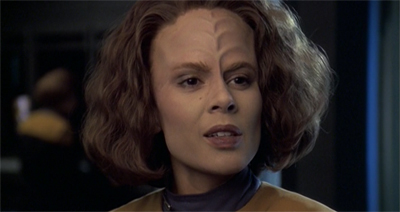
The end is (engi)neer.
Voyager seems to fit within this mode of “posthistorical” discourse. What is Voyager (and the futures portrayed within Voyager ) but “a mortal life lived without any seriousness or struggle” ? The conflict between Starfleet and the Maquis was baked into the premise of Caretaker , but brushed aside casually in Parallax . Episodes like Year of Hell, Part I , Year of Hell, Part II , Equinox, Part I and Equinox, Part II hinted at alternative worlds where Janeway’s journey was filled with seriousness and struggle, but existed in contrast to the perpetual pleasure cruise that defined most of the rest of the run.
Similarly, the world and the futures of Voyager emphasise “the regulated boredom of a perpetual reproduction of modernity on a world scale.” On Deep Space Nine , it frequently seemed like the future was something that had to be fought for and earned; Inter Arma Enim Silent Leges revealed that the final stages of the Dominion War were spent planning for the political turmoil that would extend beyond What You Leave Behind . In contrast, it seemed like Starfleet faced no significant challenges to its political supremacy, the future just an extension and expansion of the present.
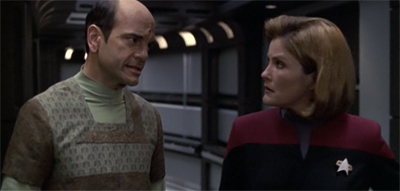
“Now, let us never speak of this again.”
So Blink of an Eye allows Voyager to literally stand outside of history, to watch time flow for the people on the planet surface while everything remains static on the ship itself. The implication is clear, Voyager exists outside of time, quite separate from the flow. Indeed, it is revealing that the environment of the planet is not just accelerated but incompatible to Voyager . When Gotana-Retz and Trina find themselves on board Voyager, they discover a moment suspended in time. It recalls the imagery of Voyager buried beneath the ice in Timeless , literally frozen.
Blink of an Eye suggests that there is something more than just time and gravity that separates the inhabitants of the planet from the characters on the ship. Unlike Interstellar , it is not easy for characters to navigate between the various time flows. Torres classifies Voyager as a “disruption” to the flow of time on the planet, its presence causing chaos on the surface. The EMH is the only character who can beam down to the surface. Trina and Gotana-Retz have to violently transition into Voyager’s timeframe, with the shock to their systems so great that Trina does not survive.
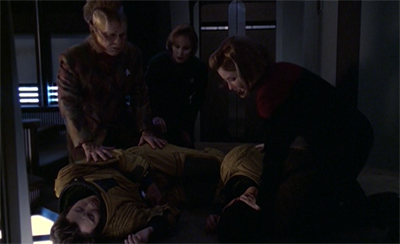
Time’s up.
It is not merely that time moves slower on Voyager, it is that Voyager exists outside of time. The introduction of time to Voyager is seen as something dangerous, an idea that is repeated at several points over the course of these final seasons; the return of an aged Kes in Fury and the fracturing of the ship’s timeline in Shattered . Indeed, the sight of Trina and Gotana-Retz collapsing on the bridge suggests that of fish that have jumped out of water. There is a sense that there is some vital element of their existence that is sorely lacking on Voyager.
However, Blink of an Eye is about more than just Voyager . In some ways, it feels like a commentary on Star Trek itself. It plays as a genuine and sincere ode to Star Trek fandom, an interesting counterpoint to the more obvious and patronising portrayal of fandom in Pathfinder . There is a sense that Voyager is not only standing in for Voyager over the course of the episode, it is standing in for the abstract concept of Star Trek as a cultural construct. This would explain why the episode’s treatment of the natives’ attitudes to Voyager is different than similar attitudes in Who Watches the Watchers?

Star shining bright above you…
The inhabitants of the planet are treated as Star Trek fans. Indeed, there’s a repeated emphasis on “sky ship” merchandise that has become a fixture of children’s lives. “So you weren’t one of those children that had the entire series of Sky Ship Friends?” the astronomer asks the technician. The technician responds, “Actually, I had them all, even the duplicates. You couldn’t walk into my home without tripping over a Friend or two.” Gotana-Retz tells Janeway, “When I was a young child, the toys hanging above my crib depicted the Sky Ship.” The EMH talks about “children’s toys.”
When asked what the inhabitants know about Voyager, the EMH explains, “They blame us for the seismic tremors but everything else is pure speculation. And let me tell you, they like nothing better than to speculate about Voyager.” He elaborates, “Our presence has encouraged invention, religion, science, art even children’s toys. They’re all variations on a single theme, Voyager.” Indeed, the existence of Voyager inspired direct innovation, “There’s something of a space race going on between the various states. Who can get to the starship first with a rocket?”

A trek to the star.
Although there are shades of religion to the relationship between the inhabitants of the planet and the ship in their orbit, Blink of an Eye suggests that their interest is more spiritual in nature. When pressed to account for his involvement in the project, the technician assures the astronomer, “I hope someone is up there.” It’s a simple idea, but one stated eloquently. It suggests a message of hope and idealism. Blink of an Eye suggests that “the sky ship” never inspired an inquisition or human sacrifice, and that investment in it extends beyond even rational and scientific education.
As such, it feels like a metaphor for the impact that Star Trek has had on popular consciousness. After all, Star Trek has been likened to a religion, and shares some of the same spiritual properties: a core set of beliefs, a “canon” , even ritualised celebration . Much has been written about the franchise’s social utility, particularly its use as a vehicle for discussions of abstract moral concepts and philosophical ideas . Also, there has been lots and lots (and lots) of Star Trek merchandise that has helped to integrate the franchise’s iconography into the popular consciousness .
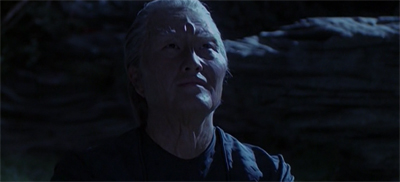
The old man and the sky.
However, Star Trek has also contributed to material social progress, despite being something intangible and abstract. The show has a long-standing relationship with NASA . It inspired Mae Jemison to become an astronaut . As Karl Stapelfeldt, the chief scientist for NASA’s Exoplanet Exploration Program, explains :
Star Trek presents a widely accessible vision of what might be out there in the broader universe. People’s interest in the show can be a launching point to discover the real science of astronomy and the real engineering of space travel. A lot of people in aerospace or science are fans of the show, not because we want to act out episodes, but because we’d love to travel/explore/learn about our universe. We’d like to do this not just for ourselves but for the whole world, for all people who are curious about what’s out there and how humanity fits in.
There is something romantic in that idea, that the utopian future of the Star Trek franchise can inspire to people to imagine a world beyond their own, just as looking up at a star in the night sky could inspire the aliens in Blink of an Eye to reach towards space. Blink of an Eye even explicitly acknowledges this idea of Voyager serving as an abstract influence on the planet’s population. “Perhaps they’ll miss Voyager so much, they’ll do everything they can to follow us.”

Astro-not, eh?
Blink of an Eye imagines Voyager as a metaphor for Star Trek , an abstract concept more than a concrete object. It is something that seems to exist outside the harsh contours of the present moment, something that endures and lasts. Many fans and pundits would argue that Star Trek is “timeless” , and this seems like a fair observation. The franchise has remained popular for a much longer period than many of its contemporaries, and remains relevant to the modern world. Episodes like Errand of Mercy and Balance of Terror remain potent, even half a century away from broadcast.
However, there is also something bittersweet in the way that Blink of an Eye positions the Star Trek franchise outside of time. There is something tragic in the way that the world beneath Voyager seems to evolve past the ship. After all, the plot hinges on the planets’ inhabitants evolving to such a degree that they can forcibly eject Voyager from orbit. More to the point, this ejection follows on from an earlier sequence in which the planet starts firing torpedoes at Voyager. “They have no right,” Gotana-Retz argues. Janeway responds, “Unfortunately, they’ve got every right.”
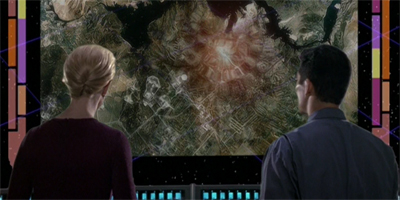
Launch time.
There is something very melancholy in the idea that the world might have moved past Star Trek , but it fits with one of the recurring anxieties of the later seasons of Voyager . After all, The Voyager Conspiracy was a bitter rejection of serialisation, one that often felt like an acknowledgement of Voyager ‘s refusal to evolve with the television around it. The framing device of Pathfinder seemed deliberately structured to evoke The Sopranos , the poster child for television’s great leap forward in the final years of the twentieth century.
The final seasons of Voyager were written and broadcast just as the first drops of blood were entering the water. The franchise had coasted softly down from the high of the thirtieth anniversary, with the success of Star Trek: First Contact and Trials and Tribble-ations . With Deep Space Nine off the air, Voyager became the sole standard bearer for the Star Trek franchise, and one subject to the whims of a fickle network. The franchise had just endured the humiliation of Star Trek: Insurrection .
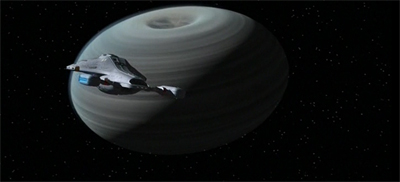
As the world turns. Very fast, apparently.
Of course, things could be worse. In fact, things would get worse. Voyager was still a relatively popular show on UPN. Rick Berman and Brannon Braga were already working on the series that would become Enterprise , the Star Trek show that would replace Voyager in UPN’s line-up. There was still some blood left in the Star Trek franchise, and the Berman era had another five years of life left in it. At the same time, there was a sense that the production team were mulling the franchise’s mortality for the first time in quite a long period.
Rick Berman has since suggested that he wanted Star Trek to be allowed to lie fallow after UPN retired Voyager , hinting at some awareness of a changing cultural mood . The departure of Ronald Moore from Voyager at the start of its sixth season had opened the floodgates for vitriolic and embittered internet fandom . Newspapers openly speculated about the long-term viability of Star Trek as a franchise . Death was not yet at the door of the Berman iteration of the Star Trek franchise, but it lingers on the horizon.
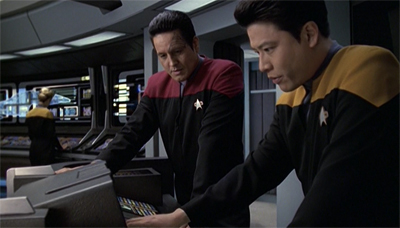
“Don’t worry, we’ll always have characters as compelling as Chakotay and Kim.”
Blink of an Eye seems to make peace with this fact, five years ahead of time. If the final two seasons of Enterprise rage against the dying of the light, Blink of an Eye accepts the end of this iteration of Star Trek with rare dignity and restraint. It is an episode that dares to imagine a future in which Star Trek simply may not be there, when one of the great guiding lights of popular culture might disappear from view, having lost the power to make the world tremble before it. The closing scene of Blink of an Eye is a beautiful farewell to a force that changed the world.
“I feel like I’m saying goodbye to an old friend,” Gotana-Retz confesses to Janeway in their final scene together, before the closing moments of the episode show an old man watching the ship leave orbit. If this is goodbye, it is a measured and considered farewell. It is the kind of farewell that is only possible through acknowledging the passage of time.
Share this:
Filed under: Voyager | Tagged: abstract , blink of an eye , einstein , end of history , End of Time , history , star trek , star trek: voyager , time , timeless , voyager |
17 Responses
I watched this over the weekend for the first time after reading this review. Wow! It’s a surprisingly good episode. There’s some clumsy dialogue early on (or perhaps Robert Beltran was just sick of trying to make bad dialogue work), but once it gets going it is surprisingly engaging. It feels like it’s part of a Joe Menosky “reflection on Star Trek as a cultural symbol” trilogy, along with Muse and Living Witness.
Also, I once met Daniel Dae Kim, so I think this may be the only VOY episode where I’ve directly met one of the actors involved 🙂
Thanks! On the one hand, I’m glad that you took my advice. On the other hand, I feel bad that there won’t be another episode that I can as wholeheartedly recommend between now and the end of the Voyager reviews. But, hey, it’s pretty damn fantastic.
This was an incredible episode, I was so transfixed by the story that I remember the vivid details of what I was doing when I watched it during its original broadcast when I was only 10 years old. I always thought of this episode as a classic, but then I watch SFdebris’s review of the episode, where he savaged it for being a rip-off of the book Dragon’s Egg. He even clarified in an episode years later on the difference between Homage vs Ripoff. https://sfdebris.com/videos/startrek/v933.php
And because of this, I don’t know what to think about it anymore. The first I ever heard of this kind of story was from Voyager in the original broadcast, and it may have even sparked my interest in history and lead me to play the Civilization games. But how much credit can I really give Voyager for that? I don’t know anymore.
I mean, a lot of stories share similar premises and ideas. And the idea of time being relative is broad enough that I think it’s entirely possible for Blink of an Eye to be an example of parallel development. Not least because this story is similar to the very first idea that David Gerrold pitched to Star Trek in the late sixties, as mentioned in the review. He developed that idea into a tie-in novel.
Much like I take Vince Gilligan at his word when he says Drive is not a rip-off of Speed, but instead of a Homicide episode.
I recall when I first watched this episode, I loved it for what it was but was found myself thinking about what it wasn’t.
For me personally, a big strength of this episode is that it ends in a way which both brings closure but also leaves room for a lot of speculation.
If the inhabitants of the planet do go off into space, how would the interactions go between those who leave and enter a ‘normal’ flow of time and everyone else where time flows at a relatively far slower rate?
In this episode the planet itself didn’t really have to deal with the temporal divide between their planet and everywhere else – it was just their normal. But if they do venture beyond their planet in a sustained way, that would affect personal relationships and life in dramatic ways.
Looking back now, I appreciate the episode in more of a meta-sense, given that TNG, DS9 and VOY are from an era of Star Trek which has now passed.
PS. There’s a little typo when you wrote, “suggests that of wish that have jumped out of water.”
Thanks James! Typo is corrected.
No mention of “Wink of an Eye” the original Trek episode with Kirk that this is a re-telling of? Nerd Fail.
Dear Darren,
I just want to say: love your reviews. You take the reviews of these episodes to a whole new level, with philosophical and historical takes on the episodes and with broader views of the whole franchise.
You give me a new perspective on Star Trek, and to get a new perspective on something in life, that is a rare gift.
Thanks Harmen. This means a lot to me. I really appreciate it.
One thing I wondered was why the people on the planet couldn’t see the time difference. It should have been noticeable in the movements of stars and other bodies in their system (if there were any.) Also, the Doctor mentions that they had only one brief war while he was there, although it seems they would have had many other conflicts with so many nation states in such a crowded area (the “medieval” period showed a castle, which is a defensive structure).
I think a lot of that is just down to narrative simplicity and efficiency. It’s a pretty big high concept as is, and I think over-complicating it would have taken away from the more lyrical and poetic quality of the episode. Then again, I am quite partial to Joe Menosky’s approach to Star Trek , which tends towards these sorts of metaphors and narrative devices more than traditionally hard science (and inevitably techno-babble-driven) approaches.
A very enjoyable “hour”, I fully agree. I just got a headache about the physics of the transition between the two time areas but it does not need to make absolutely and logically sense for the story to work as well as it does.
My only two quibbles are that the scriptor writes visibly in English when they try to send a message in a balloon to Voyager. And I think there should have been some more lasting change to the Doctor – It was just three years, but it still reminded me a lot of Picard’s experience in “Inner Light”. At least his interest in singing got some new nourishment before really taking off in the next episode.
As always I am impressed by your ability to link story and production context, Darren. It never occured to me that this episode was sort of a farewell to good old Star Trek, but indeed, it does make some kind of sense, especially given the archteypical quality of this story. The imagery of a frozen crew speaks for itself…
Yep. It’s one of my favourite Voyager episodes because it plays like an old-school Star Trek fairy tale.
I’m not a Trek fan and watched this specific episode because it sounded similar to the classic Simpsons halloween segment ‘The Genesis Tub’ where Lisa’s baby tooth spawns a miniature civilisation that rapidly develops technology.
I guess I’m still not a massive fan, but wanted to say I found this post really in-depth and thoughtful, and I’ve enjoyed reading up on Einstein vs. Bergson!
Thanks Daniel! Glad you enjoyed.
I think that Simpsons episode is specifically referencing a Twilight Zone episode, The Little People .
I really like this episode however I can’t get my head around how the people on the planet could see stars when they were spinning so fast. Surely they would have just seen elongated blurs across the night sky. Also, was Voyager captured by the planets rotation and spinning as well? If so they would’ve been no time difference. If not, how did they stay focused on just one part of the planet when the planet’s surface was going past them at such a high speed? I still really love this episode but would appreciate if someone could explain this to me.
I’ve always liked this episode as one of the top 10 Voyager episodes (in my book). As some above have suggested, it is reminiscent of the Civilization video games, where we have archetypes of ‘progress’, viewed through a shot of a valley that iterates with architecture over time.
I also agree that the doctor should have been more permanently affected by his three years (with a partner and son apparently) down on the planet. But who are we kidding? This is Voyager, and we have to hit the reset button. That said, it would have been more interesting if the doctor had been left down on the planet for 20-60 years and had come back and been enraged at being ripped out of his life, and was a totally different character, lol.
As other have noted, one of the most obvious common sense plot holes is the idea of the sky. While I get that Star Trek is not hard sci fi, it doesn’t take a rocket scientist to realize that the planet’s sun (and stars) would be a flickering band of light in the sky. This would also radically alter evolution on the planet. Any sentient life would likely be freakishly different to humans. Indeed, the doctor seems to fear the planet will be inhabited by purple blobs or something. It’s a shame Voyager can’t even embrace the weirdness that such a world could provide. Instead, it’s just another forehead of the week.
Lastly, the biggest and most frustrating plot hole here: Based on the rate of technical progress that Voyager witnesses, they should have sent the doctor back with a mission to help with the R&D of tech to get Voyager home, either through some sort of gateway or an advanced warp system. All Voyager would have needed to do was hang out for a day, week, or whatever. They literally fly away from a free route home. This drove me nuts when I first saw the episode 20 years ago. It still does.
Leave a comment Cancel reply
This site uses Akismet to reduce spam. Learn how your comment data is processed .
Recent Posts
- 371. Poor Things (#246)
- 370. Dune: Part Two (#12)
- 369. Memento (#57)
- 368. Monty Python and the Holy Grail (#154)
- 367. Star Trek: Generations (#—)
Recently tweeted…
- "I Simply Am Not There": The Existential Horror of Eighties Excess in "American Psycho"...
- Adding Our RSS Feed to Your Gmail
- "The Things You Gotta Remember Are the Details": Reservoir Dogs and the Fragility of Memory and Meaning in the Nineties...
- Star Trek: Voyager (Reviews)
Available at…

Blogs Well Worth Your Time
- 1001 Must See Films
- Andrew at the Movies
- Anomalous Material
- Cut the Crap Movie Reviews
- Encore Entertainment
- Fandango Groovers
- FlixChatter
- Four of Them
- It Rains… You get Wet…
- Jameson Cult Film Blog
- Jar Watches Films
- Let's Go To The Movies
- M. Carter at the Movies
- Marshall and the Movies
- Movie News First
- Musings from a Man Lost in La Mancha
- Never Mind Pop Film
- Paragraph Film Reviews
- Roger Ebert's Journal
- Ross v. Ross
- Scannain.com
- Screenwriter (Donald Clarke, Irish Times)
- Strange Culture
- The Film Cynics
- The Pompous Film Snob
- The Projection Booth
- Things That Don't Suck
- Too Busy Thinking About My Comics
- Undy a Hundy
Film Nerd Resources
- CinemaBlend (News)
- Internet Movie Database
- Rope of Silicon
- The Guardian Film Blog
- James Berardinelli
- Roger Ebert
Email Subscription
Enter your email address to follow this blog and receive notifications of new posts by email.
Email Address:
Sign me up!
Blog at WordPress.com. WP Designer.
- Already have a WordPress.com account? Log in now.
- Subscribe Subscribed
- Copy shortlink
- Report this content
- View post in Reader
- Manage subscriptions
- Collapse this bar
- Why I'm Boldly Going
- What's Going On Here
- Generic Ensign
Wednesday, November 6, 2013
Voyager: blink of an eye.
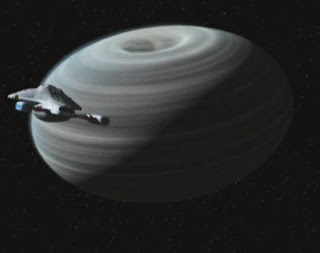
7 comments:
This is a beautiful episode.
Isn't it? Every time I see it, I'm impressed by how well done it is.
You are so lucky to have actually spent time with and gotten to know a couple of the actors. I went to a Trek convention in Hollywood, 2004 celebrating James Doohan who was in last stages of Altzheimer's, and there were many of the original cast and TNG stars there to honor him... but the lines were so long and I was too shy when I did meet a few of the actors. Now I regret the chance to ask some meaningful questions and make more particular compliments.
Oh wow, I would've loved to meet James Doohan. I've heard he was such an amazing, kind person.
I love this ep. Such a unique story & so well done.
Yes! I love this one.
I did meet James Doohan briefly. When Star Trek IV was out, I was driving home from college and heard on the radio that he was at a nearby mall. I was buying and collecting individual original series episodes on VHS then, so I whipped into a store and bought "Wolf in the Fold." Then I got in line, hoping he would sign it. When I got to him, he told me he couldn't, because if he did it for me he'd have to do it for everybody. I understood. So I just blathered something stupid, thanked him, and moved on. He was nice though, and shook my hand. A few years later when Star Trek VI came out he was in town for some reason and booked as a guest to be on our morning show (I work at a local TV station). I didn't want to wake up early and be a creepy stalker, so I gave the tape to our anchor and asked if she could get him to sign it. Then I also offered to write some interesting questions for her--better than the usual stuff that they've answered a hundred times. I recorded the interview and watched it later that day. As expected, he's tired, and the questions are bland and old. Then, about halfway through, she switches to mine. I knew he had just gotten some honorary engineering degree from some college and she asked about that. He immediately perked up and got a spark in his eye. He talked about his love of inspiring engineering students. There were some other questions that departed from the tried and true, and he answered them with gusto. On Monday, I returned to work and found the VHS taped on my desk. Signed.
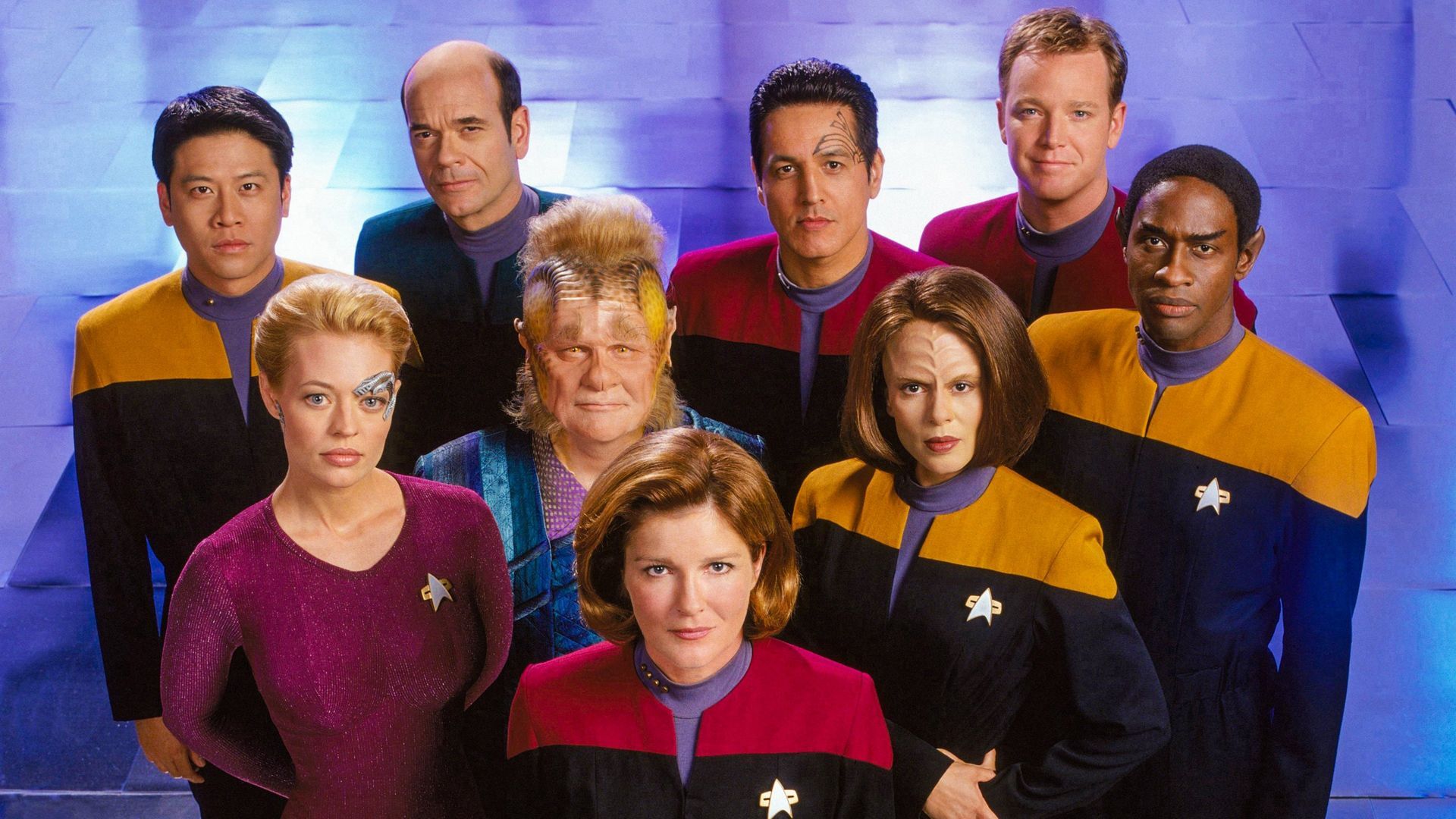
Star Trek: Voyager
Blink of an eye, watch on these services.

Take Plex everywhere
Discovery Season 5 is Taking a Huge Swing With Star Trek Canon
Get out your space history books.
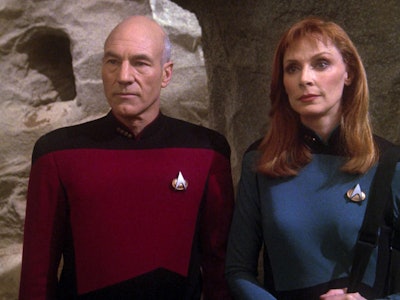
Why do so many Star Trek aliens look like humans? The real-world explanation is that way back in 1964, Gene Roddenberry said the format of Star Trek would focus on stories that took place on “parallel worlds.” This didn’t mean Trek was an alternate universe-hopping show, but that allegorically, the people encountered by the Enterprise were humanoid, thus making the stories easier to write and understand (and, from a budget perspective, easier to make). But there’s an in-universe explanation for this, too.
In 1993, Star Trek: The Next Generation devoted an episode to answering this big question. And now, 31 years later, Star Trek: Discovery is doubling down with a Season 5 storyline that serves as a direct sequel to that story. Here’s what this means and why it matters. Spoilers ahead for Star Trek: Discovery Season 5, Episodes 1 and 2.
The return of Star Trek’s Progenitors
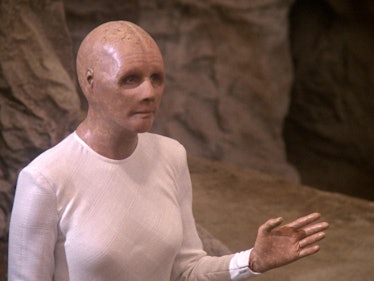
The Progenitor’s message in the Next Generation episode “The Chase.”
At the end of Discovery Season 5, Episode 1, “Red Directive,” we learn that the data the crew has been assigned to protect is connected to discoveries made by a Romulan scientist in the year 2369. Season 5 happens roughly 820 years after that date, but as Kovich (David Cronenberg) tells Captain Burnham (Sonequa Martin-Green), this information has been kept hidden for centuries. Why?
Well, in “The Chase,” Picard, Crusher, and the Enterprise-D crew — along with representatives from the Cardassians, Klingons, and Romulans — discovered an ancient message coded within DNA that revealed everyone descended from the same ancient aliens. The Progenitors, as their message explains, “...seeded the primordial oceans of many worlds, where life was in its infancy. The seed codes directed your evolution toward a physical form resembling ours.”
Captain Burnham is floored by this information, which makes sense since she’s originally from the 23rd century, and her pre-time travel adventures in Starfleet predate Picard’s by about 100 years. But Burnham’s ignorance of the Progenitors isn’t because she and the Discovery crew are time travelers. There’s another reason why this has all been classified.
Discovery’s new God-mode tech
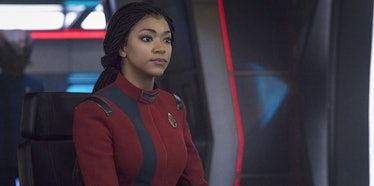
Captain Burnham (Sonequa Martin-Green) is racing to find the most powerful Trek tech of all time.
The fact that most humanoid-looking life in Star Trek descended from an ancient alien species isn’t a new revelation to longtime Trek fans. Even Original Series episodes “Return to Tomorrow” and “The Paradise Syndrom” hinted that several species originated thanks to some kind of organized panspermia . What is new is that the technology the Progenitors used to create life on thousands of worlds has been found.
In Discovery’s “Red Directive,” the journal left by the Romulan scientist is just the first piece of the puzzle. The larger mission is to find the technology the Progenitors developed millions of years ago, and so Discovery has revealed the most powerful technology in all of Trek canon to date. In The Wrath of Khan , we got the Genesis Device , a tech capable of instantly terraforming planets. In Voyager’s “Year of Hell,” the Kremin weapon ship pushed entire planets out of the spacetime continuum, altering history in the blink of an eye.
But those examples of super-tech were unstable. What’s interesting about the ancient Progenitor tech is that it obviously works . Discovery’s imperative to find the tech is classic Trek: if the ability to seed life on a planetary scale falls into the wrong hands, the galaxy could be changed forever. In the grand tradition of Star Trek, the biggest superweapons aren’t planet-destroying superweapons, but something that could redefine and rewrite life itself.
Star Trek: Discovery Season 5 airs on Paramount+.
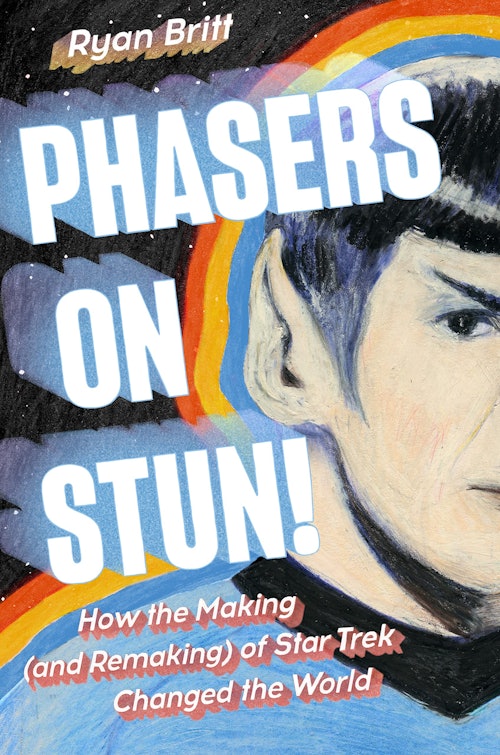
Ryan Britt's new book on the history of Star Trek's biggest changes. From the '60s show to the movies to 'TNG,' to 'Discovery,' 'Picard,' Strange New Worlds,' and beyond!
- Science Fiction
- Cast & crew
- User reviews
Wink of an Eye
- Episode aired Nov 29, 1968

A group of aliens who exist in a state of incredible acceleration invade the Enterprise and abduct Capt. Kirk. A group of aliens who exist in a state of incredible acceleration invade the Enterprise and abduct Capt. Kirk. A group of aliens who exist in a state of incredible acceleration invade the Enterprise and abduct Capt. Kirk.
- Gene Roddenberry
- Arthur Heinemann
- Gene L. Coon
- William Shatner
- Leonard Nimoy
- DeForest Kelley
- 32 User reviews
- 11 Critic reviews

- Captain James Tiberius 'Jim' Kirk

- Mister Spock

- Nurse Chapel
- Lieutenant Hadley
- (uncredited)
- Security Guard #2

- All cast & crew
- Production, box office & more at IMDbPro
Did you know
- Trivia The remastered version of this episode premiered in syndication the weekend of 13 January 2007. New shots of Scalos from space, as well as an enhanced matte painting of the surface were inserted into the episode, alongside more realistic phaser effects. This was the first remastered episode from third season to air and thus featured a "new" opening titles sequence.
- Goofs Captain Kirk could quite have easily communicated with his crew using basic paper and pen.
Scott : Ship's Log, Stardate 5710.5, Lieutenant Commander Scott reporting. While exploring an outer quadrant of the galaxy, the Enterprise received distress calls from an apparently uninhabited, incredibly beautiful city on the planet of Scalos. Captain Kirk and a landing party have beamed down to investigate.
- Alternate versions Special Enhanced version Digitally Remastered with new exterior shots and remade opening theme song
- Connections Featured in Bring Back... Star Trek (2009)
- Soundtracks Theme Music credited to Alexander Courage Sung by Loulie Jean Norman
User reviews 32
- Jun 14, 2014
- November 29, 1968 (United States)
- United States
- Official Facebook
- Stage 31, Paramount Studios - 5555 Melrose Avenue, Hollywood, Los Angeles, California, USA
- Paramount Television
- Norway Corporation
- See more company credits at IMDbPro
Technical specs
- Runtime 51 minutes
Related news
Contribute to this page.
- IMDb Answers: Help fill gaps in our data
- Learn more about contributing
More to explore

Recently viewed

IMAGES
VIDEO
COMMENTS
Blink of an Eye: Directed by Gabrielle Beaumont. With Kate Mulgrew, Robert Beltran, Roxann Dawson, Robert Duncan McNeill. Voyager becomes trapped in orbit of a planet where time passes rapidly, days within seconds, and enters the mythos of its indigenous people.
Star Trek: Voyager. ) " Blink of an Eye " is the twelfth episode from the sixth season of the science fiction television series Star Trek: Voyager, 132nd episode overall. The show is set in the 24th century of the Star Trek universe, aboard the USS Voyager spaceship on a decades long journey back to Earth.
Over time and generations, a world tries to uncover the mystery of a strange object in the sky. The USS Voyager approaches a planet rotating 58 times per minute and, while investigating, the ship enters a gravimetric gradient pulling it into a geosynchronous orbit in which the crew becomes trapped. On the planet, a native is then seen preparing an altar. Just then, an earthquake occurs, and ...
"Star Trek: Voyager" Blink of an Eye (TV Episode 2000) cast and crew credits, including actors, actresses, directors, writers and more. Menu. Movies. Release Calendar Top 250 Movies Most Popular Movies Browse Movies by Genre Top Box Office Showtimes & Tickets Movie News India Movie Spotlight.
Celebrating the 25th Anniversary of Star Trek: Voyager, this is one of 50 episode reviews of the 4th live-action series in the Star Trek franchise.Tweet us @...
Capt. Janeway and the crew orbit a primitive planet which begins to evolve at an astonishing rate, leveling its new-found weaponry at Voyager.
Voyager becomes the unwitting focus of a planet's entire civilization.
Star Trek: Voyager Blink of an Eye Sci-Fi Jan 19, 2000 43 min Paramount+ Available on Paramount+, Prime Video, iTunes S6 E12: Voyager becomes the unwitting focus of a planet's entire civilization. Sci-Fi Jan 19, 2000 43 min ...
Blink Of An Eye. Help. S6 E12 44M TV-PG. Voyager becomes the unwitting focus of a planet's entire civilization.
Blink of an Eye. September 24, 2022. Blink of an Eye. The U.S.S Voyager, captained by beloved Starfleet veteran Kathryn Janeway, is on a mission to return to Earth after an unprecedented seventy-year journey through the Delta Quadrant. As they cruise through an alien system of planets, they come across a strange anomaly: a planet is spinning ...
Episode Guide for Star Trek: Voyager 6x12: Blink of an Eye. Episode summary, trailer and screencaps; guest stars and main cast list; and more.
Nutshell: A good reapplication of a good premise that was misapplied in its original use. "Blink of an Eye" is a compelling hour of Voyager, and it might've seemed like a truly original sci-fi concept if it weren't for the fact the basic premise was made into an episode of original Trek more than 31 years ago.
Blink Of An Eye By Edward James Hines Posted at January 19, 2000 - 6:00 AM GMT. If nothing else, the finer details of the Star Trek: Voyager episode "Blink of an Eye" test not only your ability to ...
Blink of an Eye is perhaps the last truly great episode of Star Trek: Voyager.. There are good episodes that follow Blink of an Eye.There are solid comedy episodes like Renaissance Man.There are effective homage episodes like Author, Author.There are even well-constructed archetypal narratives that fit within the thematic framework of both the series and the franchise like Memorial.
In this one, Voyager comes upon a planet spinning way, way too fast. They try to go in for a closer look but get caught in the planet's gravitational field and wind up becoming the planet's freaking third pole. This has some serious consequences--humanoids all over the planet can now see Voyager (like a twinkling star in the sky) and their ...
Summaries. Voyager becomes trapped in orbit of a planet where time passes rapidly, days within seconds, and enters the mythos of its indigenous people. Voyager is trapped in orbit above a strange planet where time passes thousands of times faster than in the surrounding galaxy. As the population of the planet evolves Voyager becomes an integral ...
In the Star Trek: Voyager episode "Blink of an Eye", Voyager is stuck in orbit of a planet with a tachyon core which causes time on the planet to elapse at a much faster rate than normal.. Voyager's visible presence has a great effect on the planet's culture and technology, as centuries pass on the surface below. Eventually, the Doctor is sent down to the planet to investigate.
Star Trek: Voyager: S6E12 Blink of an Eye Capt. Janeway and the crew orbit a primitive planet which begins to evolve at an astonishing rate, leveling its new-found weaponry at Voyager.
Where to watch Star Trek: Voyager · Season 6 Episode 12 · Blink of an Eye starring Kate Mulgrew, Jeri Ryan, Robert Picardo and directed by Gabrielle Beaumont.
"Star Trek: Voyager" Blink of an Eye (TV Episode 2000) cast and crew credits, including actors, actresses, directors, writers and more. Menu. Movies. Release Calendar Top 250 Movies Most Popular Movies Browse Movies by Genre Top Box Office Showtimes & Tickets Movie News India Movie Spotlight.
In Voyager's "Year of Hell," the Kremin weapon ship pushed entire planets out of the spacetime continuum, altering history in the blink of an eye. But those examples of super-tech were unstable.
Runtime 45m. Director Gabrielle Beaumont. Writers Joe Menosky + 1 more. Country United States. Languages English. Genres Drama, Science Fiction, Action, Adventure, Fantasy. Stardate: Unknown. Voyager becomes the target of a society it inadvertently helped to create within a short period of time.
Wink of an Eye: Directed by Jud Taylor. With William Shatner, Leonard Nimoy, DeForest Kelley, Kathie Browne. A group of aliens who exist in a state of incredible acceleration invade the Enterprise and abduct Capt. Kirk.
The last bit of the title seems a bit redundant. What else are you going to blink?Character art by @anebulouspurpose on instagram.https://www.instagram.com/a...
In the Blink of an Eye (upcoming film) In the Blink of an Eye. (upcoming film) In the Blink of an Eye is an upcoming American science fiction film directed by Andrew Stanton and written by Colby Day. It stars Kate McKinnon, Rashida Jones and Daveed Diggs . The film will be released by Searchlight Pictures on Hulu in the United States.